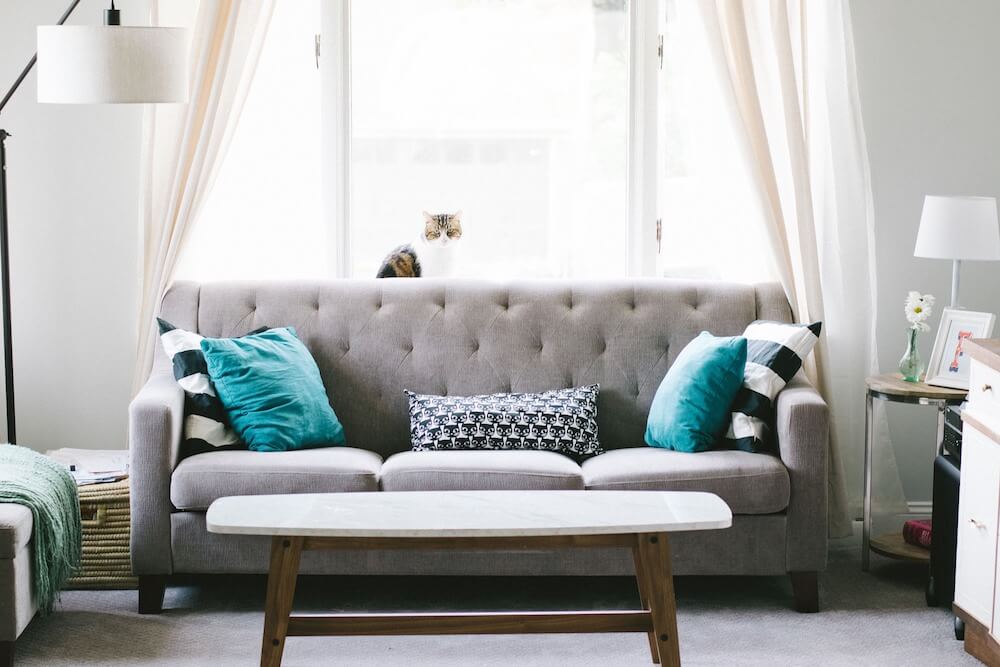
People use storage units for all sorts of things. From business paperwork and tools to extra clothes, family heirlooms and junk they just aren’t ready to throw away yet. But one of the most common things we see stored is sofas. They are the love of many lives – the soft, squishy, comfortable staple in all UK homes. The place we go to crash out when we’re tired or cuddle up in to watch TV when we’re sick. They come in all shapes and sizes, just like their owners, from big and fuzzy, compact and squishy or bright and floral. But there may come a point when you need to store your beloved sofa. It might be too big for the new house you’re moving to, you might be re-decorating or you might have decided to replace it and need to get it out of the way until you sell it. Whatever the reason, your sofa needs a new home for a while. But sofas are expensive, and you don’t want them to be damaged while they’re stored. So, today’s post is all about making sure that your sofa comes out in the same condition as it goes in.
First things first, you need to choose the right storage facility for your sofa. It’s all too easy if you’re short on time or on a tight budget to just jump into the first storage unit you find. After all, if they don’t have any security in place then your unit could be broken into and your sofa stolen. If there isn’t any vermin control, then you may end up getting your sofa back with some added furry friends you didn’t ask for. So before you commit to anything, make sure you take your time to do your research and choose a facility with:
· Good security
· Affordable prices
· Clean facilities
· Climate control (if possible)
· Friendly staff
· Access when you need it
Now that you know where your sofa is going to live, you need to do some prep work. Because it doesn’t matter how nice your facility is, if you don’t prepare your sofa properly then it won’t come out in great condition. Your first step will be giving your sofa a good, deep clean. This means taking it apart, hoovering every crevice and even washing the cushion coverings if they are removable. This stops any food crumbs from rotting and reduces the chances of mould or mildew growing on your sofa. It also means you’ll find any old coins or bits and pieces that may have fallen down the back that might cause damage if they rattle around. But while you’re cleaning, make sure you are using the right products and cleaning according to the manufactures instructions, because otherwise, you could risk damaging the sofa before it’s even got into storage.
Once your sofa is completely clean, the next step is to cover it. Bear in mind, you need to be sure that the sofa is completely, 100% dry before you cover it, or else it could start to grow mildew and transfer that to other items in your storage unit. It’s also worth mentioning that you want to avoid using a plastic cover for your sofa since they aren’t breathable and will collect condensation. Instead, go for something soft and breathable, like cotton. Depending on the structure of your sofa, you might also want to put some protective padding around the corners and wheels to prevent any moving damage.
Now you’ve prepared your sofa, it’s time to put it in storage. Depending on the size of unit you’ve got, this might limit how you can position it. Some people may choose to store their sofa upside-down, at angles or even disassembled and stacked. And if you’re strapped for space, this might be your best option. But we recommend storing it in the same way it sits in your living room. We also don’t recommend you put boxes or other items on top of it, as this could strain the sofa and cause long-term damage.
The main message here is simple – take your time, and store your sofa as if you were going to be sitting on it while it’s in storage. And if you want to make sure your sofa comes back to you in the same condition you left it, there are only a few things you need to do to preserve it. For more information, advice or packaging materials for your sofa, get in touch with the team at Blue Box Storage today.